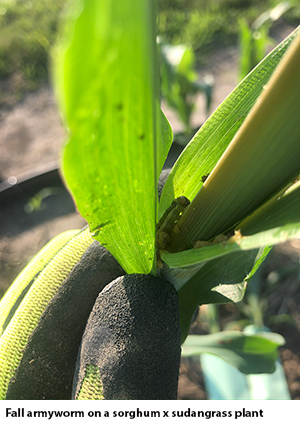Growing Beef Newsletter
September 2024, Volume 15, Issue 3
Late Season Forage Considerations
Shelby Gruss, ISU extension forage specialist
 Despite the recent high temperatures, fall is just around the corner. Preparation for fall harvest is underway, and many are gearing up for corn silage harvest within the next week. Here are some important forage considerations as we head into the fall season.
Despite the recent high temperatures, fall is just around the corner. Preparation for fall harvest is underway, and many are gearing up for corn silage harvest within the next week. Here are some important forage considerations as we head into the fall season.
Weed Control
Fall is an ideal time to implement weed control practices, particularly for perennial and biennial weeds in pastures and hayfields. A typical application window is early September through October. Waiting until spring to control biennials can be problematic, as they develop quickly to set seed. Late summer and fall offer the best opportunities for controlling perennial weeds, provided they have sufficient foliage to absorb herbicides. However, once plants begin to yellow, it's often too late for effective control, as they've already started to enter dormancy. Applying herbicides at this time takes advantage of the plant's natural process of sending sugars to the roots for winter survival, making them more susceptible to treatment. However, if delayed until the sugars have already been translocated, control becomes much less effective. For cool-season perennial weeds like Canada thistle, the optimal application window typically can be expanded further into the fall following a light frost but before a hard frost occurs.
Fall Armyworm
Fall armyworms have been reported in the southern part of the state. They can be devastating in forage fields, including hayfields, pastures, small grains, and warm-season annual forages. Fall armyworms can cause significant damage quickly, especially in their final instar stage. Scouting for fall armyworms is best done in the morning or early evening when they are most active. Using a sweep net can help detect smaller instars that may be difficult to spot. Action may be necessary if the number of caterpillars exceeds the threshold of 2 to 3 per square foot in hay and pastures. However, as we approach fall, haying may not be recommended to ensure winter survival of the forage. If insecticide application is warranted, timing is crucial; it should target young larvae less than half an inch long. Applications should be made when armyworms are active, either in the morning or late in the day. Pyrethroids are generally a good option, although some states have reported reduced efficacy in certain fields. High volume and pressure application methods are recommended to create small droplets that ensure contact with the larvae. Continue to scout for migrating larvae until frost.
Preparing for Corn Silage
As you prepare for corn silage harvest, remember the following considerations. Target plant moisture should be between 65-70%, which helps ensure good fermentation and packing without nutrient leaching. This moisture level is often correlated with milk line development. However, this can vary depending on the hybrid and environmental conditions. Measuring moisture is recommended once the milk line develops to ensure chopping at the correct moisture content. A milk line closer to the cob indicates higher starch content. Harvesting at drier moisture levels can increase starch content and energy but may result in less digestible fiber and lower starch digestibility, making the material harder to ferment.
On the other hand, wetter silage (>65%) generally packs well and has higher sugar content, which drives fermentation. However, if the silage is too wet, it can lead to leaching from the piles. The preference for moisture level often depends on specific management goals, whether maximizing starch or ensuring good fermentation and digestibility. Lastly, keep in mind the importance of having well-packed silage and covering your silage piles. Both can greatly reduce spoilage losses.
Overall, there are many considerations for fall forage management, and these are just a few key points to keep in mind.
This monthly newsletter is free and provides timely information on topics that matter most to Iowa beef producers. You’re welcome to use information and articles from the newsletter - simply credit Iowa Beef Center.
Archived issues
